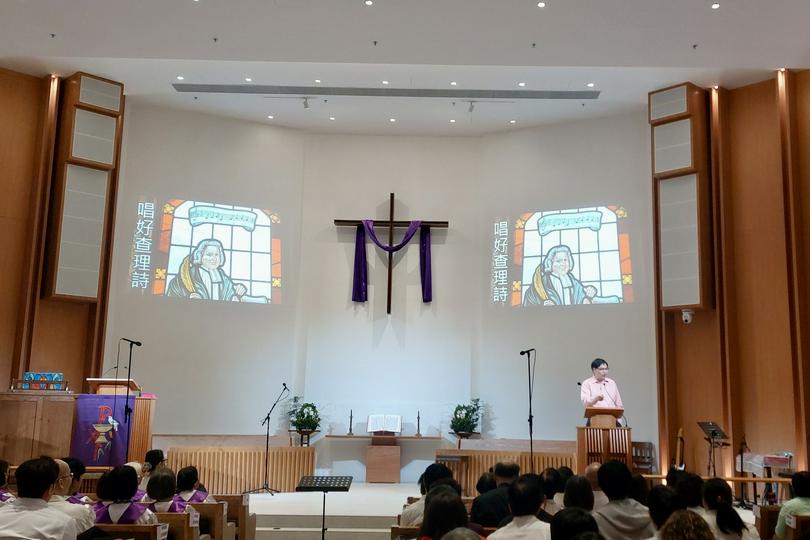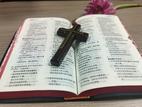On March 23, the "Charles Wesley Hymn Lecture and Concert" took place at North Point Methodist Church, Hong Kong. Dr. Leung Yat Hin, a worship studies scholar from the Robert E. Weber Institute for Worship Studies, and Professor Yip Ching Wah, dean of the Divinity School of Chung Chi College at the Chinese University of Hong Kong, guided attendees through the 18th-century hymnody of Charles Wesley, exploring his theological contributions and the historical context of his era. Through lectures and live demonstrations, these time-honored hymns resonated anew, inspiring reflections on their significance for contemporary worship and Christian living.
Dr. Leung began by sketching the life of Charles Wesley (1707–1788), a prodigious hymn writer and key figure in the Methodist movement. Despite his pivotal role in the Methodist revival led by his brother John Wesley, Charles remained an Anglican priest throughout his life, reflecting his complex relationship with the institutional church. His spiritual transformation fueled the creation of over 6,500 hymns, marked by heartfelt emotion and theological richness.
Dr. Leung then expanded the lens to examine 18th-century England, a time of dramatic change. The British Empire was rising through its naval power and colonial expansion, while societal structures underwent transformation. In the religious sphere, the Church of England faced challenges such as spiritual apathy and formalism, despite the toleration granted to nonconformists. Theological debates, particularly between Calvinist predestination and Wesleyan Arminianism, defined the intellectual climate. Church music, at the time, was often dominated by choir performances or organ accompaniments, with limited congregational participation. Against this backdrop, the Wesley brothers' hymn movement emerged as a refreshing call to awaken the soul and reignite the passion for worship.
The speaker emphasized John Wesley's vision of congregational singing as an integral part of worship and spiritual growth. To encourage participation, John established his famous "Directions for Singing," which included practical guidance: learn the tunes correctly, sing with precision and unity, and sing "lustily" (with enthusiasm) and faithfully, avoiding timidity or showiness. At its heart, congregational singing was to be sincere, aimed solely at glorifying God.
John Wesley's early skepticism toward professional choirs and elaborate instruments, such as the organ, stemmed from his concern that they might reduce congregational involvement and encourage performance over genuine worship. Instead, he championed simple and accessible melodies, often leading open-air singing to break down church barriers and bring faith-filled songs into the public realm. His ultimate goal was to realize the ideal of "every believer a priest, every believer a singer."
Dr. Leung highlighted the astonishing range and depth of Charles Wesley's hymns. Beyond well-known classics like "Hark! The Herald Angels Sing," "Christ the Lord Is Risen Today," and "Love Divine," "All Loves Excelling," Charles penned hymns that incorporated entire passages of Scripture, such as Ephesians 6's description of the armor of God. He also wrote hymns marking significant life events—baptisms, confirmations, weddings, and funerals—ensuring that faith expressions accompanied believers throughout their lives.
Charles Wesley's hymns even ventured into the political and social realities of his time, addressing themes like national prayer during wartime, loyalty to the Hanoverian monarchy, and opposition to Catholicism and revolutionary France. This revealed his belief that faith was not an escapist refuge but a force intimately connected to the destiny of nations and the pulse of society.
Dr. Leung also explored the musical forms and evolution of Wesleyan hymns. He explained the importance of "meter" in hymnody, which allowed different lyrics to be paired with shared melodies, facilitating widespread singing. While many of today's familiar hymn tunes, especially those from the Victorian era, were not the original arrangements of Wesley's time, John Wesley favored straightforward, learnable tunes to maximize participation.
The lecture also touched on the translation and adaptation of Wesleyan hymns in the Chinese-speaking world, highlighting the contributions of early missionaries like George Piercy. Dr. Leung urged contemporary Chinese Christians to treasure this spiritual heritage by producing accurate, impactful translations and even creating new hymns inspired by Wesley's spirit, adapted to local contexts.
Professor Yip Ching Wah then deepened the discussion by focusing on the emotional and theological dimensions of Wesleyan hymnody. He emphasized that Methodist spirituality is characterized by heartfelt expression, with singing as a vital means of grace—on par with prayer, scripture reading, and the Lord's Supper. Singing, therefore, is not merely an act of worship but a way of experiencing God's presence and transformative power.
Yip used Charles Wesley's hymn "Jesus, Lover of My Soul" as an example of the personal, intimate relationship with Christ often depicted in Wesleyan hymns. The bold imagery of "lover of my soul" portrays a profound and almost romantic connection between the believer and Christ, rooted in deep theological truths. Yip pointed out that this hymn was particularly meaningful for early Methodists, who endured ridicule and persecution, as it offered comfort and strength in their trials.
Comparing Wesleyan hymns to other hymn traditions, Yip noted their unique integration of liturgical depth, personal experience, and theological substance. He also highlighted the hymn "O for a Thousand Tongues to Sing," praising its Chinese translation by Liu Jingfang, which exemplifies the importance of skillful translation in preserving and transmitting the essence of these hymns.
The event concluded with choir performances by congregations from various Methodist churches, embodying the Wesleyan ideal of "singing for all."












